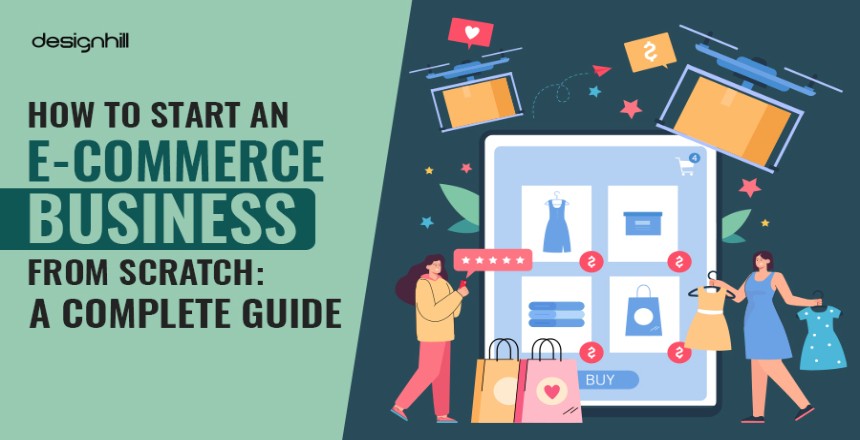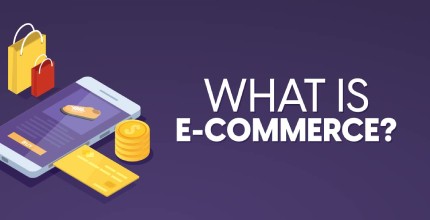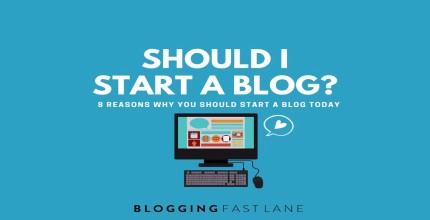
02
Jul
Launching your own online store
Launching your own online store can feel daunting—but with the right roadmap, you can transform a simple idea into a thriving e-commerce venture. Below is a step-by-step guide to help you get started from zero knowledge to your first sale.
1. Find Your Niche and Validate Your Idea
Brainstorm Product Ideas
– Start with your passions, skills, and market gaps. Think about problems you can solve or unique products that excite you.
Conduct Market Research
– Use tools like Google Trends, Amazon Best Sellers, and social-media listening to gauge demand.
– Spy on competitors: What are their price points, customer reviews, and marketing channels?
Validate with Real Prospects
– Create a quick landing page or social-media ad describing your product concept and collect email sign-ups.
– Run a small pre-order or crowdfunding campaign to test willingness to pay before investing in inventory.
2. Choose Your E-Commerce Platform
Hosted Platforms (Shopify, BigCommerce)
– Pros: Fast setup, reliable hosting, built-in payment gateways, app ecosystems.
– Cons: Monthly fees, transaction charges, less control over server.
Self-Hosted CMS (WooCommerce on WordPress, Magento)
– Pros: Full flexibility, no platform lock-in, large plugin libraries.
– Cons: Requires hosting setup, security maintenance, steeper learning curve.
Marketplaces (Amazon, Etsy)
– Pros: Instant access to massive audiences, built-in trust signals.
– Cons: High competition, marketplace fees, limited branding.
Tip: If you’re new, start with Shopify or WooCommerce for a balance of ease and control.
3. Register Your Brand and Handle Legal Essentials
Pick a Memorable Name & Domain
– Keep it short, easy to spell, and reflective of your niche.
– Check availability on namecheap.com or GoDaddy.
Set Up a Business Entity
– Choose between sole proprietorship, LLC, or corporation based on liability and tax considerations.
– Register in your local jurisdiction.
Obtain Licenses & Tax IDs
– Research required permits (especially for regulated goods).
– Apply for necessary sales-tax or VAT registrations if you plan to sell internationally.
4. Design Your Store and Optimize for Conversion
Choose a Clean, Responsive Theme
– Prioritize fast load times and mobile-friendly layouts.
– Use high-contrast buttons and clear typography for calls to action.
Craft Compelling Product Pages
– Use professional photos showing products from multiple angles.
– Write benefit-driven descriptions: focus on how your product solves a problem.
– Include social proof: customer reviews, ratings, or user-generated content.
Simplify the Checkout
– Offer guest checkout and minimize form fields.
– Display trust badges (SSL, payment-provider logos).
– Provide multiple payment options: cards, PayPal, Apple Pay, and Google Pay.
5. Set Up Inventory, Shipping & Customer Service
Inventory Management
– Start small with just-in-time or dropshipping to avoid upfront stock costs.
– Use tools like TradeGecko or Cin7 to automate stock levels and reorder alerts.
Shipping Strategies
– Offer flat-rate or free shipping thresholds to boost order values.
– Partner with carriers (USPS, DHL, FedEx) and integrate rate calculators in checkout.
Customer Support
– Provide an easy-to-find “Contact Us” page with email, phone, and live-chat options.
– Create a clear FAQ section to handle common inquiries instantly.
6. Drive Traffic and Build Your Audience
Search Engine Optimization (SEO)
– Research keywords with tools like Ahrefs or Ubersuggest.
– Optimize your product titles, meta descriptions, and image alt tags.
Content Marketing & Blogging
– Publish how-to guides, product tutorials, or industry insights.
– Share posts on social channels and repurpose them into short-form videos.
Paid Advertising
– Test Facebook and Instagram ads with well-targeted audiences.
– Use Google Shopping campaigns for high-intent search traffic.
Email Marketing
– Capture emails via pop-ups offering discounts or free resources.
– Send welcome sequences, cart-abandonment reminders, and post-purchase follow-ups.
7. Analyze, Iterate, and Scale
Track Key Metrics
– Monitor traffic sources, conversion rates, average order value (AOV), and customer acquisition cost (CAC).
– Use Google Analytics and your platform’s dashboard for real-time insights.
A/B Test Continually
– Test headlines, product images, button colors, and email subject lines.
– Implement the winning variation and move on to the next experiment.
Expand Your Offerings
– Introduce complementary products or bundle deals.
– Explore international markets and localize your store for new regions.
Final Thoughts
Starting an e-commerce business from scratch demands planning, persistence, and adaptability. By following the steps above—validating your idea, choosing the right platform, optimizing your store, and continuously iterating—you’ll be well on your way to building a profitable online venture. Remember: every big brand started small. Your first sale is just the beginning of an exciting journey.
Ready to launch? Pick your niche, set up your store, and watch your e-commerce dreams take off!
1. Find Your Niche and Validate Your Idea
Brainstorm Product Ideas
– Start with your passions, skills, and market gaps. Think about problems you can solve or unique products that excite you.
Conduct Market Research
– Use tools like Google Trends, Amazon Best Sellers, and social-media listening to gauge demand.
– Spy on competitors: What are their price points, customer reviews, and marketing channels?
Validate with Real Prospects
– Create a quick landing page or social-media ad describing your product concept and collect email sign-ups.
– Run a small pre-order or crowdfunding campaign to test willingness to pay before investing in inventory.
2. Choose Your E-Commerce Platform
Hosted Platforms (Shopify, BigCommerce)
– Pros: Fast setup, reliable hosting, built-in payment gateways, app ecosystems.
– Cons: Monthly fees, transaction charges, less control over server.
Self-Hosted CMS (WooCommerce on WordPress, Magento)
– Pros: Full flexibility, no platform lock-in, large plugin libraries.
– Cons: Requires hosting setup, security maintenance, steeper learning curve.
Marketplaces (Amazon, Etsy)
– Pros: Instant access to massive audiences, built-in trust signals.
– Cons: High competition, marketplace fees, limited branding.
Tip: If you’re new, start with Shopify or WooCommerce for a balance of ease and control.
3. Register Your Brand and Handle Legal Essentials
Pick a Memorable Name & Domain
– Keep it short, easy to spell, and reflective of your niche.
– Check availability on namecheap.com or GoDaddy.
Set Up a Business Entity
– Choose between sole proprietorship, LLC, or corporation based on liability and tax considerations.
– Register in your local jurisdiction.
Obtain Licenses & Tax IDs
– Research required permits (especially for regulated goods).
– Apply for necessary sales-tax or VAT registrations if you plan to sell internationally.
4. Design Your Store and Optimize for Conversion
Choose a Clean, Responsive Theme
– Prioritize fast load times and mobile-friendly layouts.
– Use high-contrast buttons and clear typography for calls to action.
Craft Compelling Product Pages
– Use professional photos showing products from multiple angles.
– Write benefit-driven descriptions: focus on how your product solves a problem.
– Include social proof: customer reviews, ratings, or user-generated content.
Simplify the Checkout
– Offer guest checkout and minimize form fields.
– Display trust badges (SSL, payment-provider logos).
– Provide multiple payment options: cards, PayPal, Apple Pay, and Google Pay.
5. Set Up Inventory, Shipping & Customer Service
Inventory Management
– Start small with just-in-time or dropshipping to avoid upfront stock costs.
– Use tools like TradeGecko or Cin7 to automate stock levels and reorder alerts.
Shipping Strategies
– Offer flat-rate or free shipping thresholds to boost order values.
– Partner with carriers (USPS, DHL, FedEx) and integrate rate calculators in checkout.
Customer Support
– Provide an easy-to-find “Contact Us” page with email, phone, and live-chat options.
– Create a clear FAQ section to handle common inquiries instantly.
6. Drive Traffic and Build Your Audience
Search Engine Optimization (SEO)
– Research keywords with tools like Ahrefs or Ubersuggest.
– Optimize your product titles, meta descriptions, and image alt tags.
Content Marketing & Blogging
– Publish how-to guides, product tutorials, or industry insights.
– Share posts on social channels and repurpose them into short-form videos.
Paid Advertising
– Test Facebook and Instagram ads with well-targeted audiences.
– Use Google Shopping campaigns for high-intent search traffic.
Email Marketing
– Capture emails via pop-ups offering discounts or free resources.
– Send welcome sequences, cart-abandonment reminders, and post-purchase follow-ups.
7. Analyze, Iterate, and Scale
Track Key Metrics
– Monitor traffic sources, conversion rates, average order value (AOV), and customer acquisition cost (CAC).
– Use Google Analytics and your platform’s dashboard for real-time insights.
A/B Test Continually
– Test headlines, product images, button colors, and email subject lines.
– Implement the winning variation and move on to the next experiment.
Expand Your Offerings
– Introduce complementary products or bundle deals.
– Explore international markets and localize your store for new regions.
Final Thoughts
Starting an e-commerce business from scratch demands planning, persistence, and adaptability. By following the steps above—validating your idea, choosing the right platform, optimizing your store, and continuously iterating—you’ll be well on your way to building a profitable online venture. Remember: every big brand started small. Your first sale is just the beginning of an exciting journey.
Ready to launch? Pick your niche, set up your store, and watch your e-commerce dreams take off!



